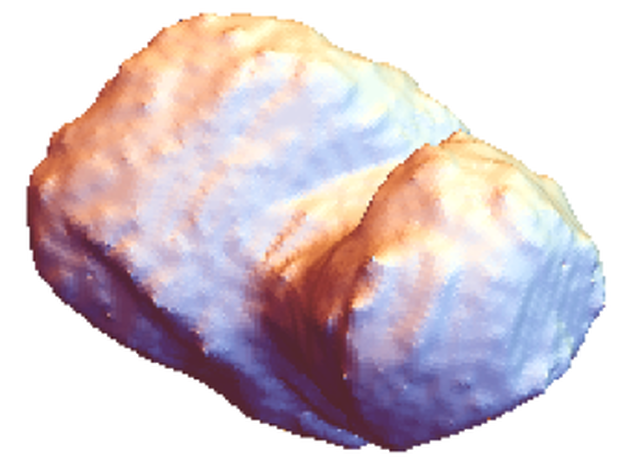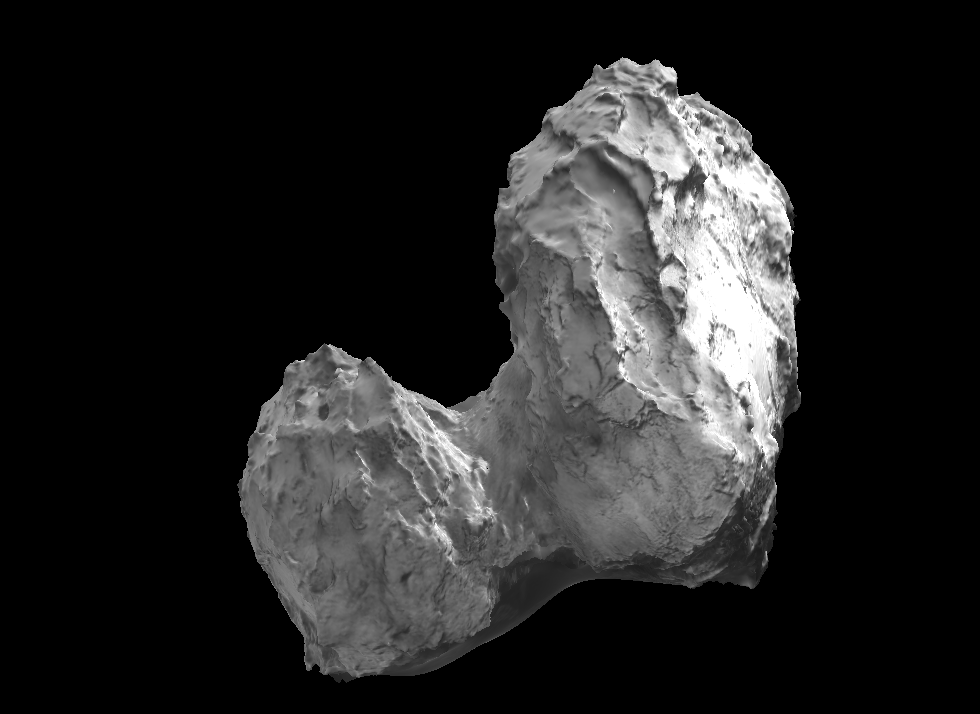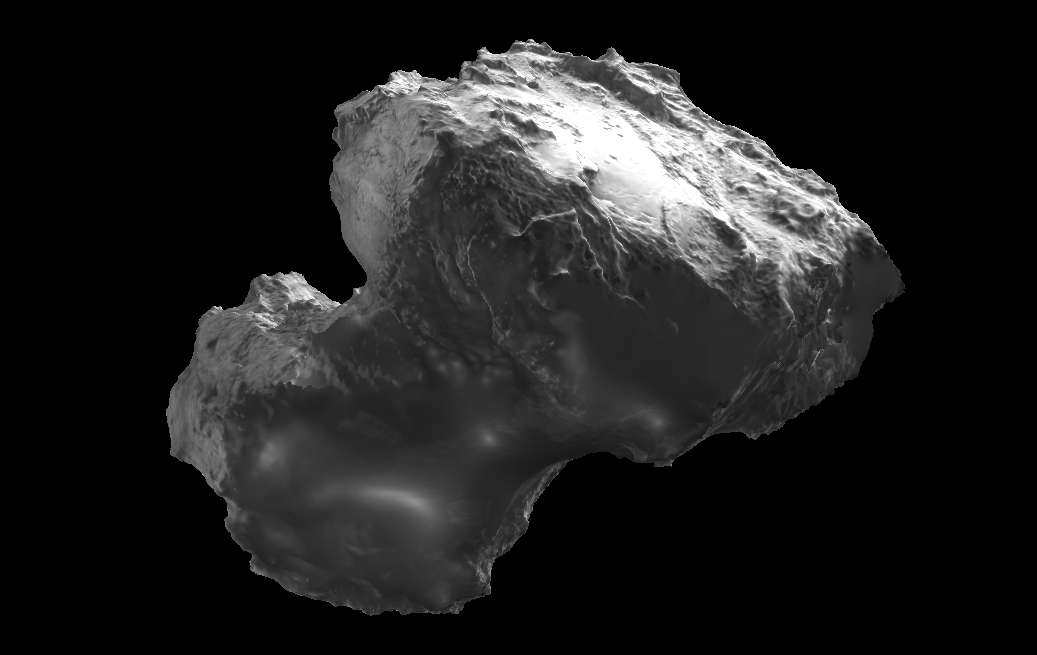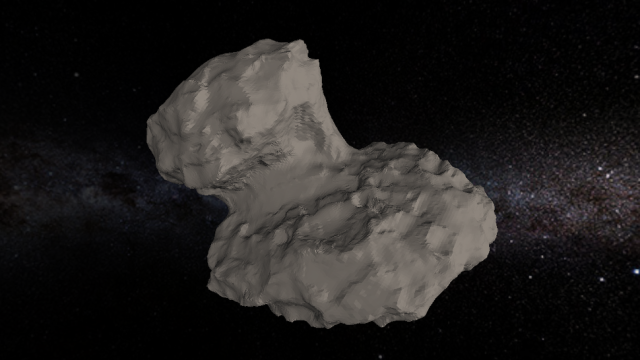The ESA has released a new 3D shape model of Comet 67P/Churyumov-Gerasimenko. This model integrates the latest images taken by the Rosetta spacecraft, and includes previously unknown features. It can be used for 3D printing or graphical representations.
Even though Comet 67P/C-G has passed its perihelion point and is currently travelling away from the Sun, the ESA’s Rosetta spacecraft is still in its orbit snapping pics. Mission planners are still learning a lot about this extraordinary two-lobed comet, and they’re revising their models accordingly.
This past October, for example, scientists were finally able to create a graphical representation of the comet’s dark, hidden side. ESA scientists are also still in the process of analysing data collected by the Philae Lander, which made its historic bounce and tumble on the comet late last year. And just this week, the ESA added 681 (!) new images to its Archive Image Browser, which covers the period May 6 to 30 June 2015.
In consideration of all this new data, the ESA has released a new shape model of the comet. A shape model is essentially a geometric representation of an object, and can be used to model human organs, create characters in computer games, provide data for 3D printers, and of course, model irregularly shaped comets.
Indeed, Comet 67P/C-G, with its two-lobed shape, proved to be challenge. When it first became clear that the object did not have a simple shape, the model designers created a very crude outline that looked like this:

From this stage, they identified the most striking surface features (30 to be exact) that were used to create reference positions. At first, these “maplets” as they’re called, measured 500m by 500m. Thanks to the generous stream of Rosetta images, however, the maplets have been reduced to 100m by 100m resolution.

Today, the ESA released the most detailed version yet of its model. It includes images taken by Rosetta’s NAVCAM up until late July 2015, as well as parts of the comet’s southern hemisphere that were not available before.

As the ESA points out, shape models are an important tool for scientists analysing images and data from Rosetta:
Such models can be used for calibrating data, studying changes on the surface, and for investigating the geology and morphology of the comet. The OSIRIS team have produced a number of shape models in the course of the past year which have been used by Rosetta scientists to select the landing site for Philae, and to determine physical properties of the comet, such as size, volume, and density, as well as measuring the rotation of the comet, its gravitational potential, and tracking changes on the surface.
The new release, which is available under a creative commons licence, includes several file types suitable for 3D printers, including .WRL, OBJ, and STL files (download page is here).
And if 3D printing is not for you, you can still enjoy the benefits of the new shape model by checking out this awesome View Rosetta’s Comet tool, which lets you zoom in and fly around the comet.
[ ESA ]
